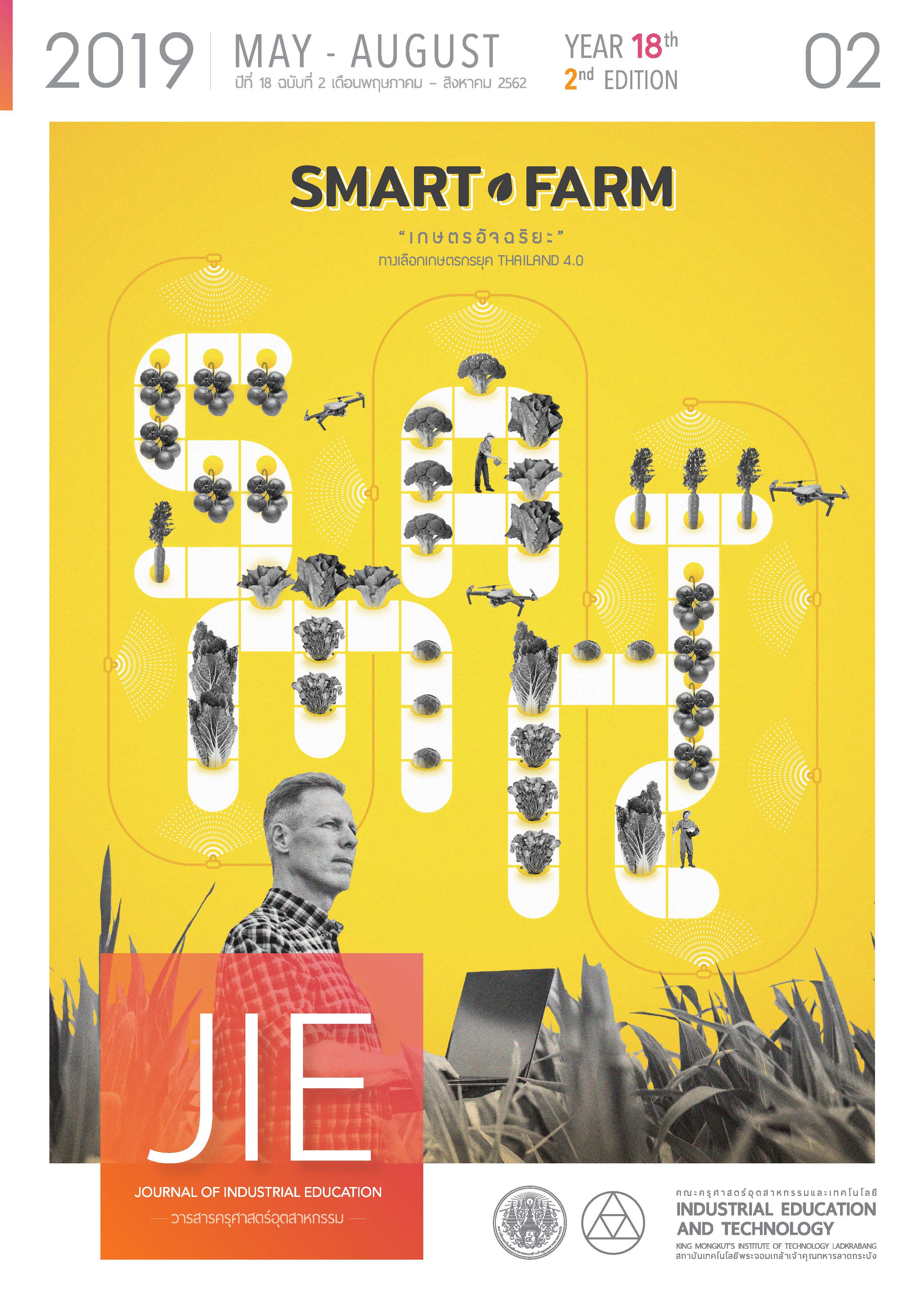THE EFFECTS OF ORGANIZING MATHEMATICS LEARNING ACTIVITIES USING ACTIVE LEARNING ON MATHEMATICS LEARNING ACHIEVEMENT AND MATHEMATICAL CONCEPT IN INEQUALITY OF NINTH GRADE STUDENTS
Keywords:
Active Learning, Mathematics Learning Achievement, Mathematical Concept, InequalityAbstract
The purposes of this research were to 1) compare the mathematics learning achievement of the ninth grade students after being taught by active learning in Inequality and 2) compare the mathematical concept of the ninth grade students after being taught by active learning in Inequality. The samples group was ninth grade students. The students were used to select 35 students by using the cluster random sampling method from Kasetsart University Laboratory School Center for Educational Research and Development. The research instruments were 1) lesson plans designed by using active learning in Inequality, 2) the 17 item achievement test in Inequality and 3) the mathematical conceptual test in Inequality. The obtained data were analyzed using mean, and standard deviation, comparative statistics, one-sample t-test and content analysis. The results of the research revealed that 1) the mathematics learning achievement scores among the ninth grade students after being taught by active learning in Inequality were higher than the 60 percent criterion at the .05 level of statistical significance and 2) the mathematical concept scores among the ninth grade students after being taught by active learning in Inequality were higher than the 60 percent criterion at the .05 level of statistical significance.
References
Somsong Suwaphanit. 2008. Teaching materials about learning theories. Ubon Ratchathani: Graduate School, Ubon Ratchathani Rajabhat University.
National Institute of Educational Testing Service. 2018. Supphonlakarotdasopthangkansuksaradapchatkhanphunthan (O-Net) Chanmatthayomsuksapithi Sam 2561. Retrieved November 15, 2018, from http://www.newonetresult.niets.or.th/AnnouncementWeb/PDF/SummaryONETM3_2561.pdf.
Usiskin, Z. 1999. “Conception of school algebra and uses of variables. In B. Moses (Ed.), Algebraic thinking, grades 9-12.” Readings from NCTM’s School Based Journals and Other Publications, Reston, VA: National Council of Teachers of Mathematics.
Khotsombat, S., & Lertamornpong, C. 2015. The Study of Ability in Solving Word Problems and Mathematics Learning Achievement on “Inequalities” of Mathayomsuksa Three Students by Using SSCS Model. Kasetsart Education Review, 30(3), P.120-130.
Thongkham Nasomtruk. 2012. Analysis of Mathematical Misconception on Linear Equation in One Variable in Matayomsueksa I Students. Journal of Burirum Rajabhat University, 4(1), P.75-88.
Sureeporn Sirinammontree. 2011. The Learning Outcomes of Mathematics Subject Group on Non- Equation for 9th Grade Education, Using the Collaborative Learning Method. Rajabhat Maha Sarakham University Journal, 5(1), P.131-140.
Amphon Makhanong. 2016. Mathematical skills and processes: development for development. Bangkok: Chulalongkorn University Print Bureau.
Surang Khootrakun. 2016. Educational Psychology. Bangkok: Chulalongkorn University Print Bureau.
Junya Phuudom. 2001. 15 Techniques in Active learning. IPST Magazine, 36(163), P.72-76.
Wichan Phanit. 2012. Withikansangkhwamruphưasit Naisatawatthi 21. Bangkok: Tathata Publication Co.
Sataporn Phrưtthikun. 2012. Quality of students derived from active learning process. Journal of Educational Administration Burapa University, 36(2), P.1-13.
McKinney, K., & Heyl, B., (Eds.). 2008. Sociology Through Active Learning. 2nd Ed. Thousand Oaks, CA: SAGE/Pine Forge Press.
Chaiyot Ruangsuwan. 2010. Design and development of courseware & web-based instruction. Khonkaen: Khonkaen Print.
Rotgans, J. I., & H. G. Schmidt. 2011. Situational Interest and Academic Achievement in The Active- Learning Classroom. Original Research Article Learning and Instruction, 21(1), P.58-67.
Rosenthal, J. S. 1995. Active learning strategies in advanced mathematics classes. Studies in higher Education, 20(2), P.58-67.
Thipwan Suthin. 2013. Active learning from Confucius to Edgar Dale. PBL WU Newsletter, 5(1), P.4-5.
Chanatip Phonkun. 2011. Teaching the thinking process: Theory and Application. Bangkok: Chulalongkorn University Print Bureau.
Sumattra Tomuang. 2016. Kanwinitchaimanothatthikhlatkhlưannaiwichakhanittasat rưang asommakan chœngsentuaprædieo kho̜ngnakrianchanmatthayommasưksapithi sam rongriankanchanaphisek witthayalai Nakho̜n Pathom (phratonak suan kahu lapmathaima) Retrieved March 24, 2019, from http://www.edu-journal.ru.ac.th/AbstractPdf/2559-1-1_1475642579_10.2-2558-2.pdf.
Vetcharit Angganapattarakajorn. 2008. The Study of Misconceptions in Mathematics of Grade 10 Students of Piboonbumpen School. Journal of Education, 20(1), P.25-35.
Downloads
Published
How to Cite
Issue
Section
License
"The opinions and contents including the words in papers are responsibility by the authors."
"ข้อคิดเห็น เนื้อหา รวมทั้งการใช้ภาษาในบทความถือเป็นความรับผิดชอบของผู้เขียน"



